Now a Wetherspoon pub, The Red Lion has stood on this site for 260 years. It is well known for its connection with the St Leger, the horse race which has made the name of Doncaster known throughout the world.
Framed drawing, photograph and text about The Red Lion.
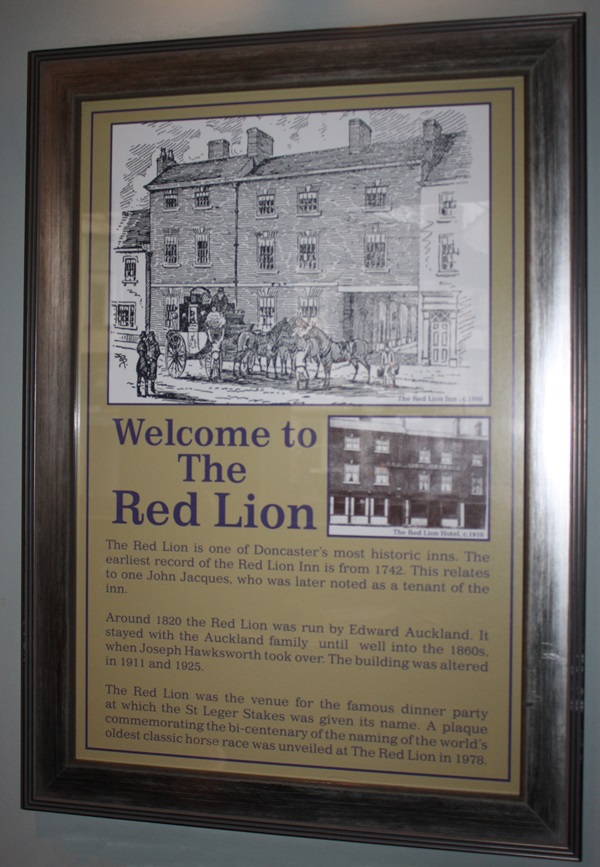
The text reads: The Red Lion is one of Doncaster’s most historic inns. The earliest record of the Red Lion Inn is from 1742. This relates to one John Jacques, who was later noted as a tenant of the inn.
Around 1820 the Red Lion was run by Edward Auckland. It stayed with the family until well into the 1860s, when Joseph Hawksworth took over. The building was altered in 1911 and 1925.
The Red Lion was the venue for the famous dinner party at which the St Leger Stakes was given its name. A plaque commemorating the bi-century of the naming of the world’s oldest classic horse race was unveiled at the Red Lion in 1978.
A plaque commemorating the Doncaster St Leger Stakes in the Duke of York Room.
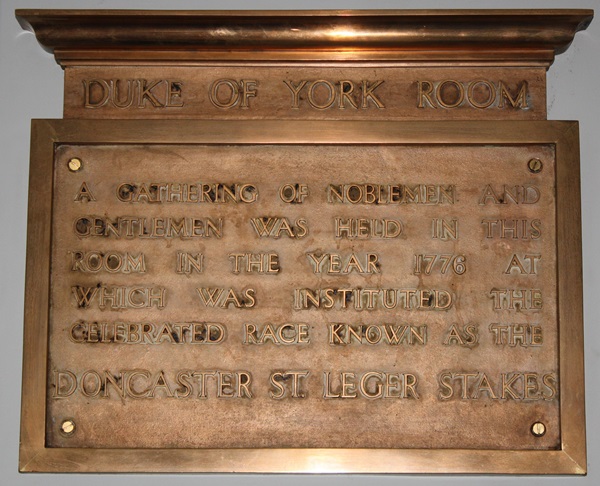
The text reads: A gathering of nobleman and gentlemen was held here in this room in the year 1776 at which was instituted the celebrated race known as the Doncaster St Leger Stakes.
A framed painting and text about the St Leger Stakes.
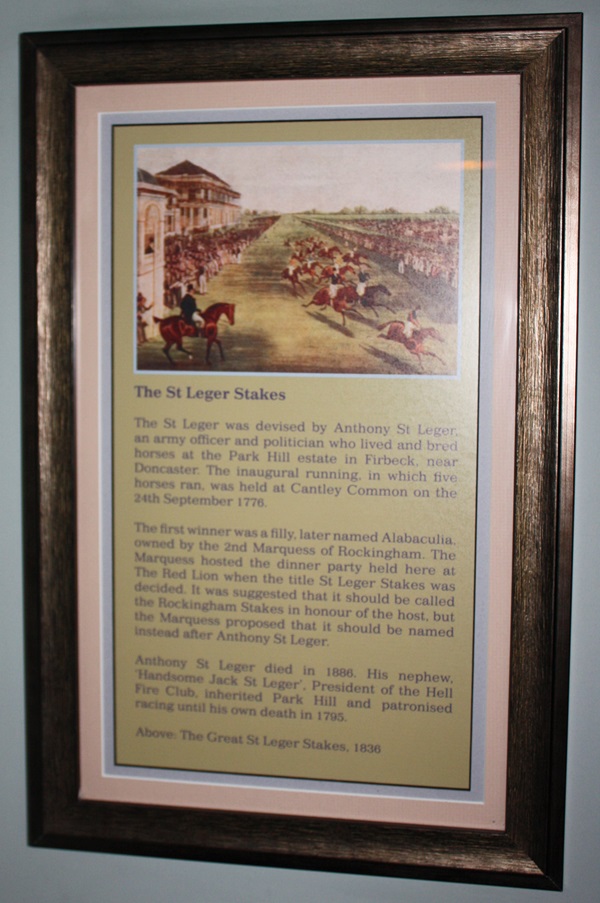
The text reads: The St Leger was devised by Anthony St Leger, an army officer and politician who lived and bred horses at the Park Hill estate in Firbeck, near Doncaster. The inaugural running in which five horses ran, was held at Cantley Common on the 24th September 1776.
The first winner was a filly, later named Alabaculia, owned by the 2nd Marquess of Rockingham. The Marquess hosted the dinner party held here at The Red Lion when the title St Leger Stakes was decided. It was suggested that it should be called the Rockingham Stakes in honour of the host, but the Marquess proposed that it should be named instead after Anthony St Leger.
Anthony St Leger died in 1886. His nephew, ‘Handsome Jack St Leger’, President of the Hell Fire Club, inherited Park Hill and patronised racing until his own death in 1795.
Above: The Great St Leger Stakes, 1836.
Framed paintings and text about the St Leger Stakes.
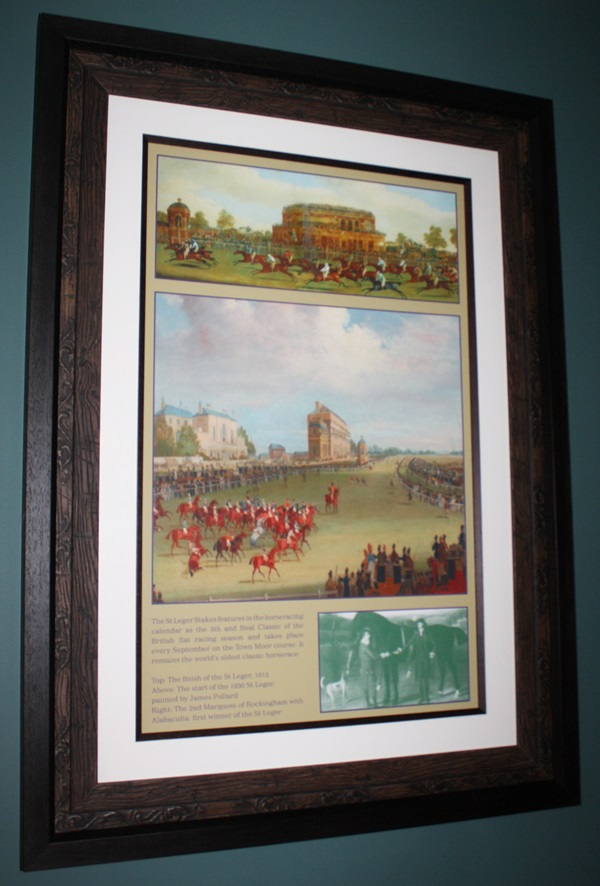
The text reads: The St Leger Stakes features in the horseracing calendar as the 5th and final Classic of the British flat racing season and take place every September on the Town Moor course. It remains the world’s oldest classic horserace.
Top: The finish of the St leger, 1812.
Above: The start of the 1800 St leger, painted by James Pollard.
Right: The 2nd Marquess of Rockingham with Alabaculia, first winner of the St Leger.
Framed drawings of Colonel Anthony St Leger and Captain John Hayes St Leger.
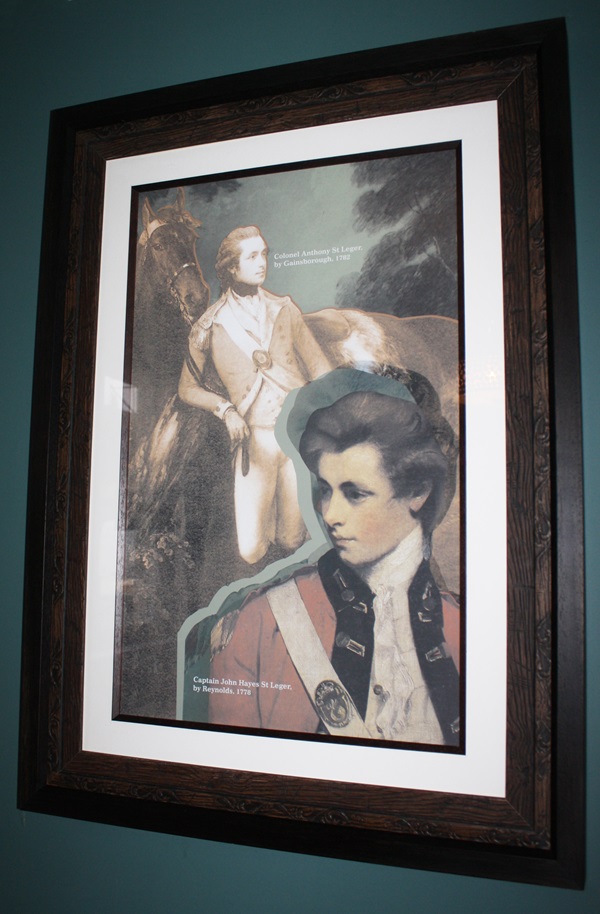
Above: Colonel Anthony St Leger, by Gainsborough, 1782.
Bottom: Captain John Hayes St Leger, by Reynolds, 1778.
A framed painting and text about William Scott.
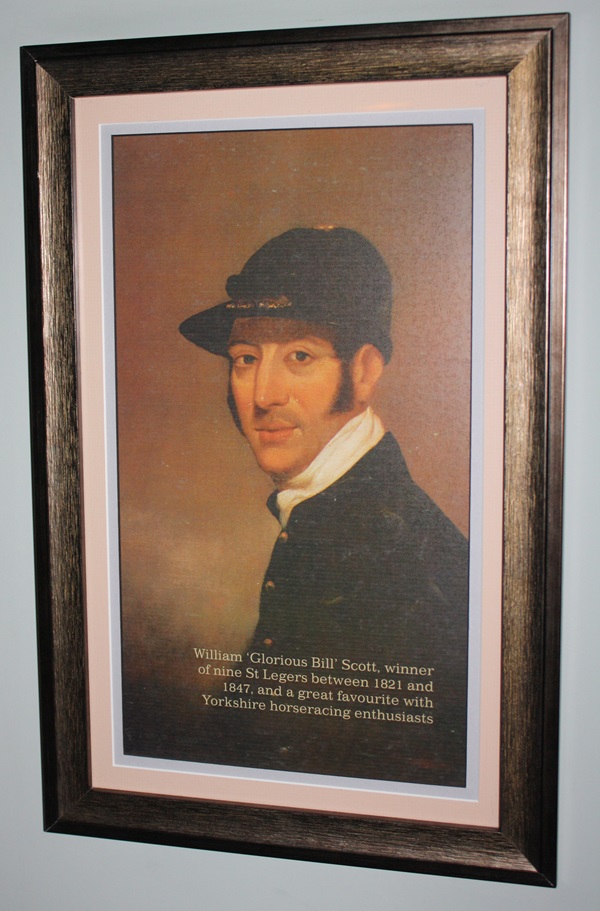
The text reads: William ‘Glorious Bill’ Scott, winner of nine St Legers between 1821 and 1847, and a great favourite with Yorkshire horseracing enthusiasts.
Framed paintings and text about John Frederick Herring.
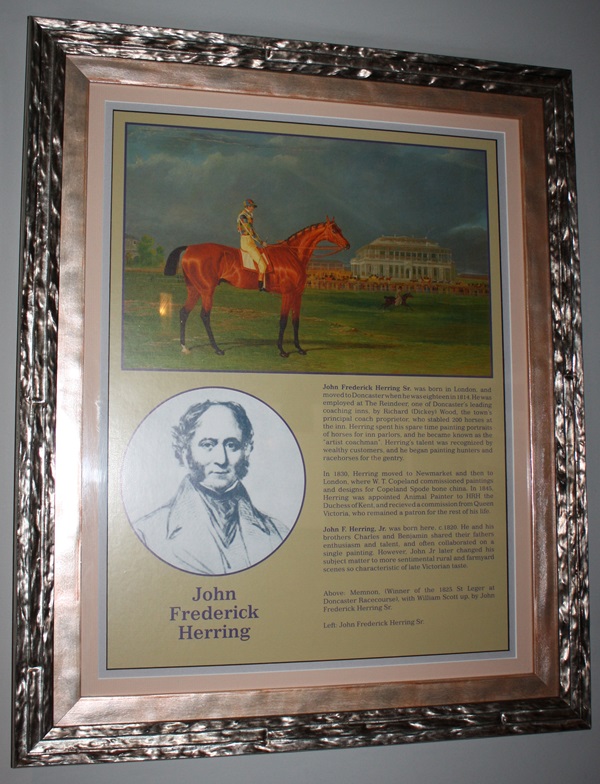
The text reads: John Frederick Herring Sr. was born in London, and moved to Doncaster when he was eighteen in 1814. He was employed at The Reindeer, one of Doncaster’s leading coaching inns, by Richard (Dickey) Wood, the town’s principal coach proprietor, who stabled 200 horses at the inn. Herring spent his spare time painting portraits of horses for inn palours, and he became known as the “artist coachman”. Herring’s talent was recognized by wealthy customers, and he began painting hunters and racehorses for the gentry.
In 1830, Herring moved to Newmarket and then to London, where W.T.Copeland commissioned paintings and designs for Copeland Spode bone china. In 1845, Herring was appointed Animal Painter to HRH the Duchess of Kent, and received a commission from Queen Victoria, who remained a patron for the rest of his life.
John F. Herring Jr. was born here, c.1820. He and his brothers Charles and Benjamin shared their father’s enthusiasm and talent, and often collaborated on a single painting. However, John Jr later changed his subject matter to more sentimental rural and farmyard scenes so characteristics of late Victorian taste.
Above: Memnon, (Winner of the 1825 St Leger at Doncaster Racecourse), with William Scott up, by John Fredrick Herring Sr.
Left: John Frederick Herring Sr.
A framed painting by John Frederick Herring Jr.
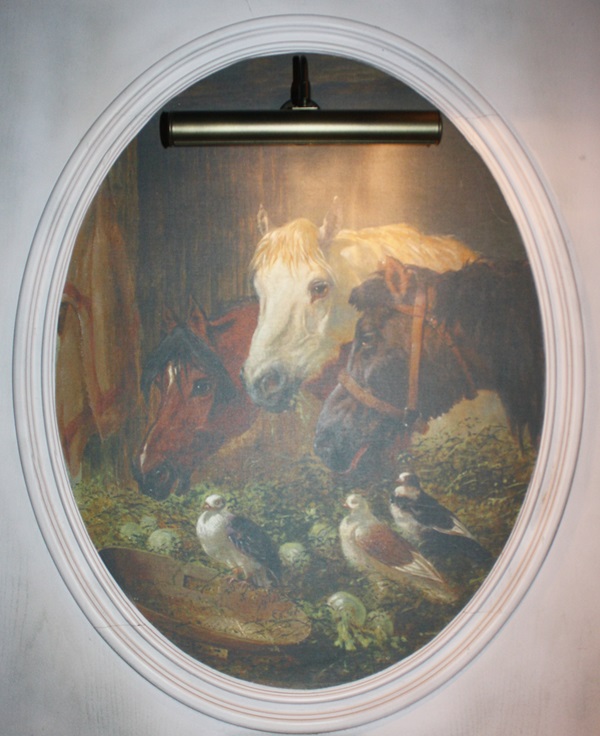
The painting is entitled Three Horses in a Stall.
A framed painting and text about Lester Piggot.
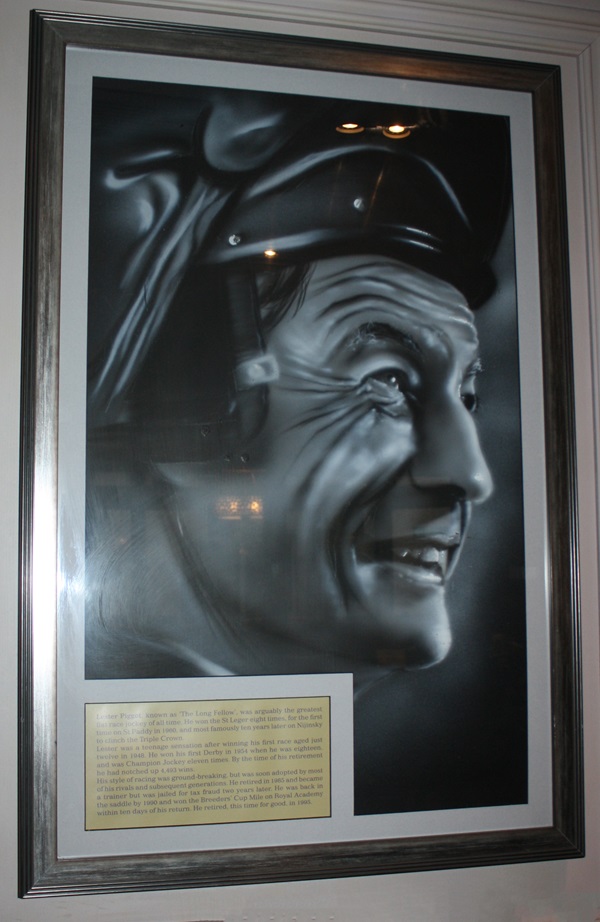
The text reads: Lester Piggot, known as ‘The Long Fellow’, was arguably the greatest flat race jockey of all time. He won the St Leger eight times, for the first time on St Paddy in 1960, and most famously ten years later on Nijinsky to clinch the Triple Crown.
Lester was a teenage sensation after winning his first race aged just twelve in 1948. He won his first Derby in 1954 when he was eighteen, and was Champion Jockey eleven times. By the end of his retirement he had notched up 4,493 wins.
His style of racing was ground breaking, but was soon adopted by most of his rivals and subsequent generations. He retired in 1985 and became a trainer but was jailed for tax fraud two years later. He was back in the saddle by 1990 and won the Breeders’ Cup Mile on Royal Academy within ten days of his return. He retired, the time for good, in 1995.
A framed photograph of Lester Piggot.
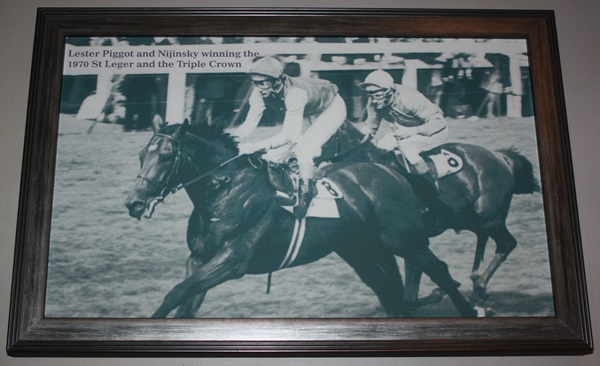
The photograph shows Lester Piggot and Nijinsky winning the 1970 St Leger and the Triple Crown.
A framed photograph and text about Walter Owen Bentley.
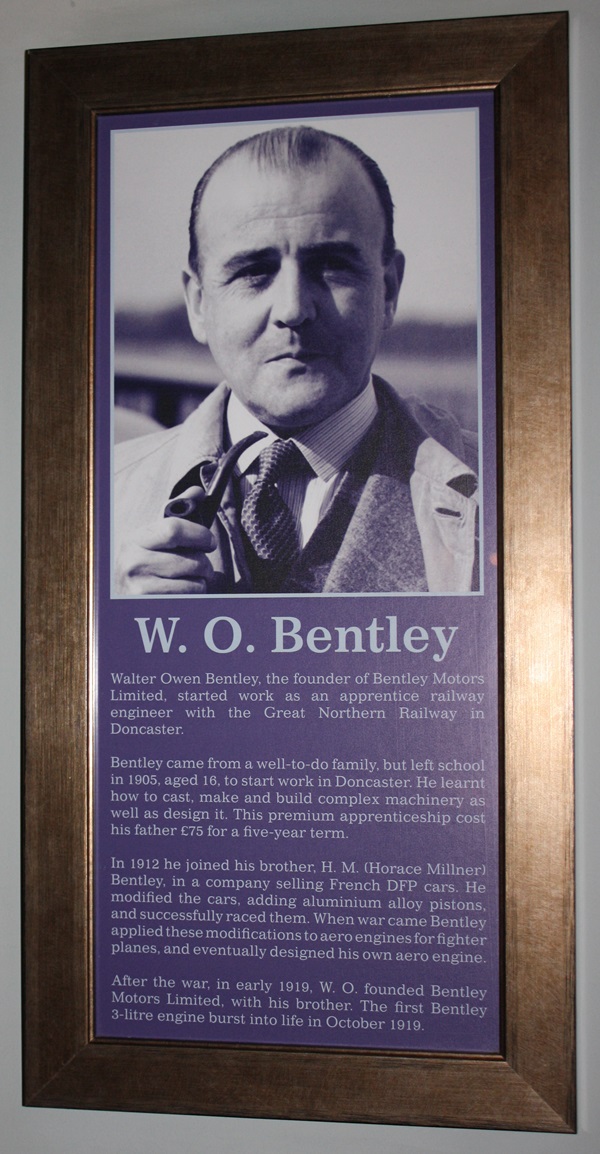
The text reads: Walter Owen Bentley, the founder of Bentley Motors Limited, started work as an apprentice railway engineer with the Great Northern Railway in Doncaster.
Bentley came from a well-to-do family, but left school in 1905, aged 16, to start work in Doncaster. He learnt how to cast, make and build complex machinery as well as design it. This premium apprenticeship cost his father £75 for a five-year term.
Framed paintings of Bentleys.
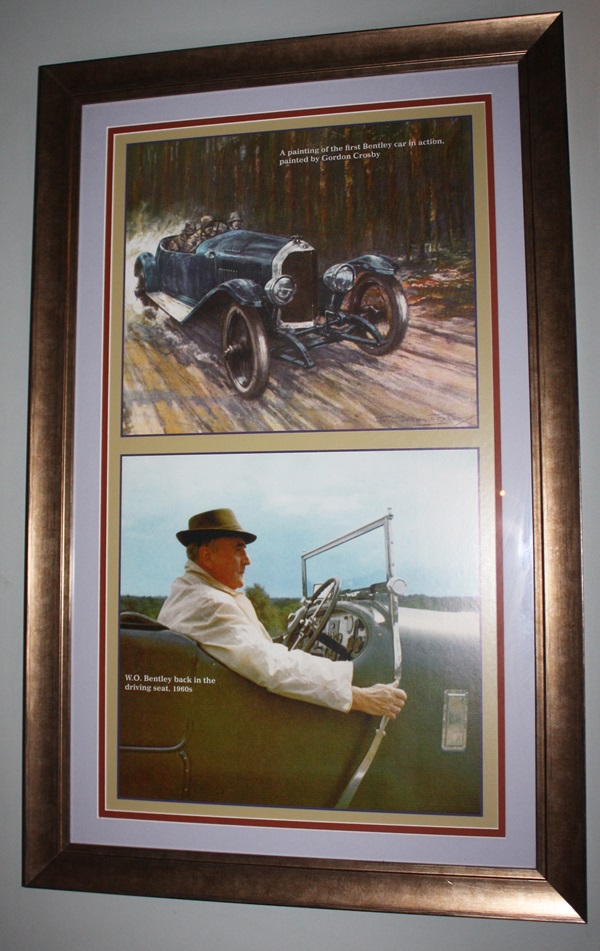
Above: A painting of the first Bentley car in action, painted by Gordon Crosby.
Below: W.O. Bentley back in the driving seat, 1960s.
Framed photographs and text about ‘The Plant’.
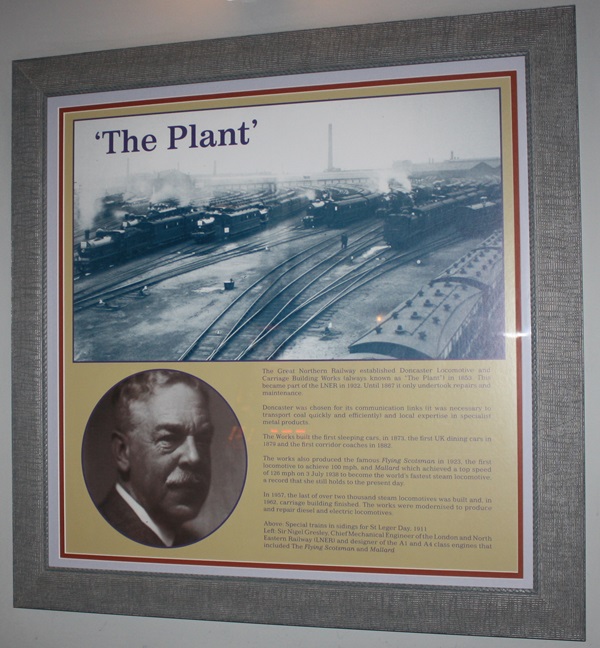
The text reads: The Great Nortern Railway established Doncaster Locomotive and Carriage Building Works (always known as “The Plant”) in 1853. This became part of the LNER in 1922. Until 1867 it only undertook repairs and maintenance.
Doncaster was chosen for its communication links (it was necessary to transport coal quickly and efficiently) and local expertise in specialist metal products.
The Works built the first sleeping cars, in 1873, the first UK dining cars in 1879 and the first corridor coaches in 1882.
The Works also produced the famous Flying Scotsman in 1923, the first locomotive to achieve 100 mph, and Mallard which achieved a top speed of 126 mph on 3 July 1938 to become the world’s fastest steam locomotive, a record that she still holds to the present day.
The 1957, the last of over two thousand steam locomotives was built and, in 1962, carriage building finished. The works were modernised to produce and repair diesel and electric locomotives.
Above: Special trains in sidings for St Leger Day, 1911.
Left: Sir Nigel Gresley, Chief Mechanical Engineer of the London and North Eastern Railway (LNER) and designer of the A1 and A4 class engines that included the Flying Scotsman and Mallard.
A framed photograph of the first locomotive.
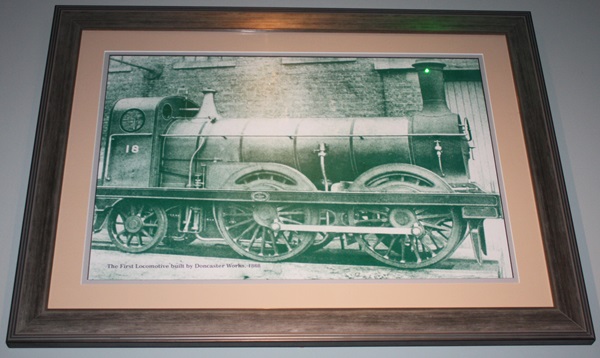
The photograph shows the first locomotive built by Doncaster Works, 1868.
A framed photograph of the Flying Scotsman.
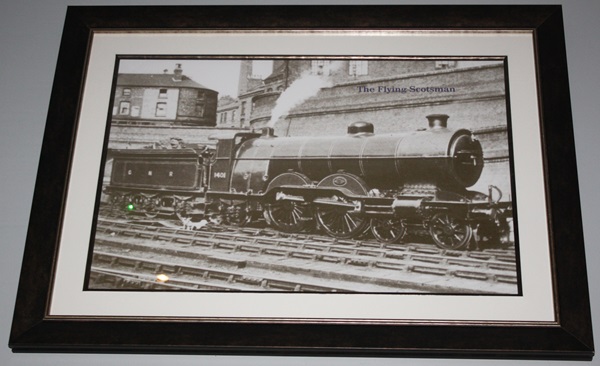
A framed photograph of Mallard and apprentices, c.1940.
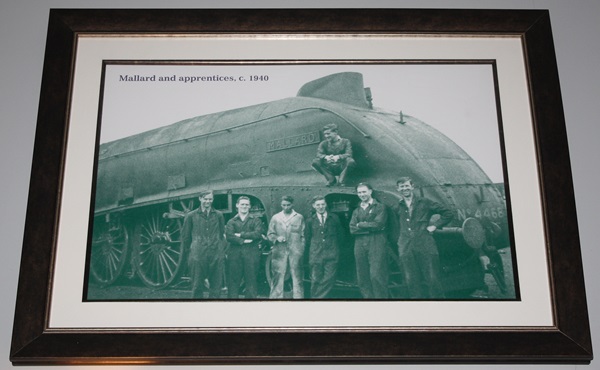
A framed poster and text about the first aviation meeting in England.
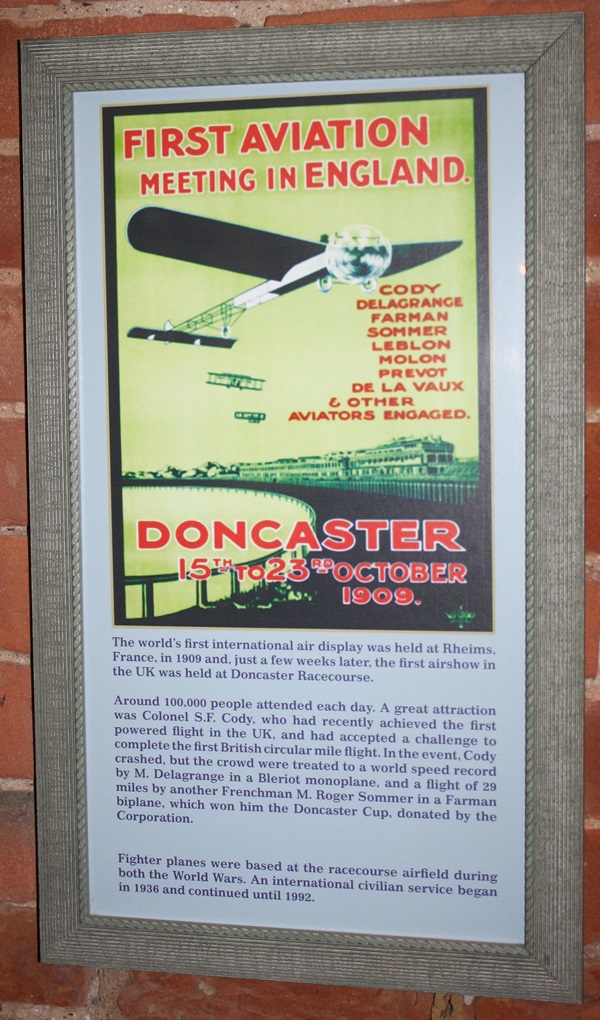
The text reads: The world’s first international air display was held at Rheims, France, in 1909 and, just a few weeks later, the first air show in the UK was held at Doncaster Racecourse.
Around 100,000 people attended each day. A great attraction was Colonel S.F. Cody, who had recently achieved the first powered flight in the UK, and had accepted a challenge to complete the first British circular mile flight. In the event, Cody crashed, but the crowd were treated to a world speed record by M. Delagrange in a Bleriot monoplane, and a flight of 29 miles by another Frenchman M. Roger Sommer in a Farman biplane, which won him the Doncaster Cup, donated by the Corporation.
Fighter planes were based at the racecourse airfield during both the World Wars. An international civilian service began in 1936 and continued until 1992.
A framed poster advertising England’s first aviation show.
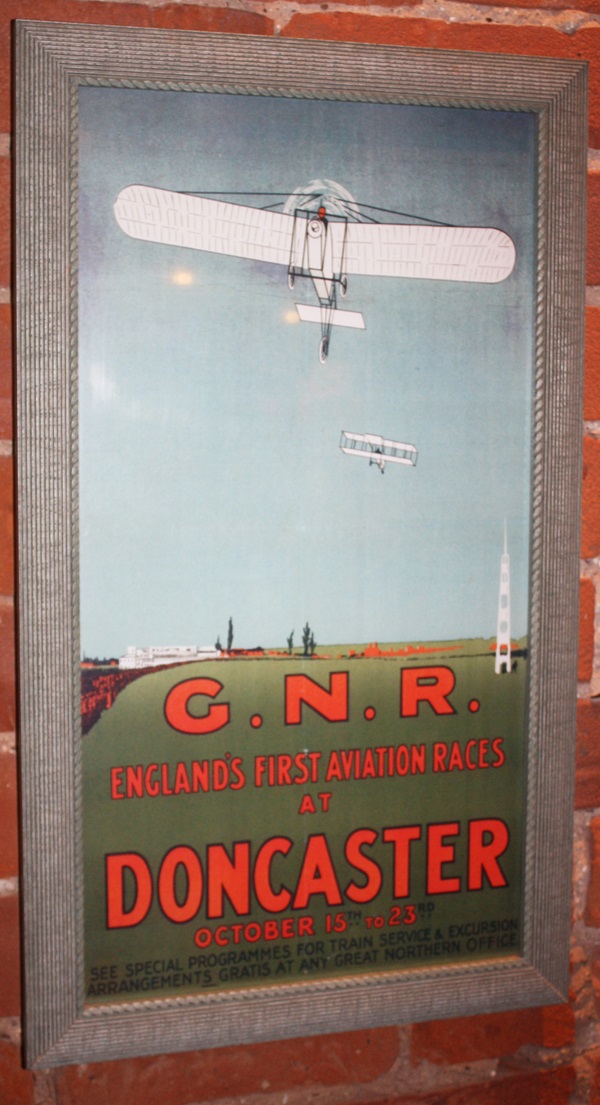
A framed programme for England’s first aviation show.
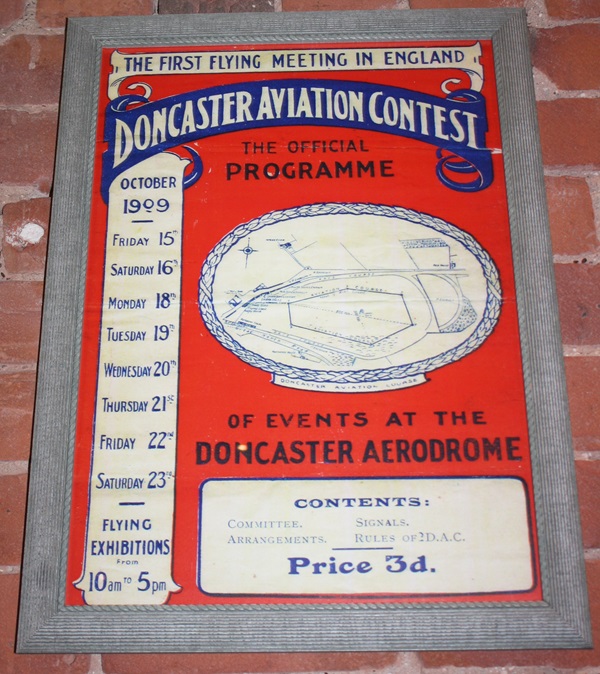
A framed drawing of a Bleriot monoplane in Doncaster, 1909.
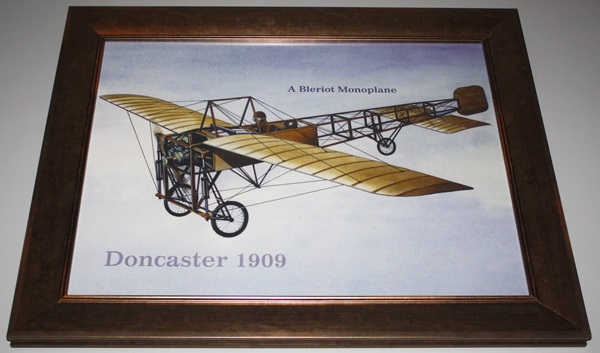
Framed photographs and text about Sir Douglas Bader.
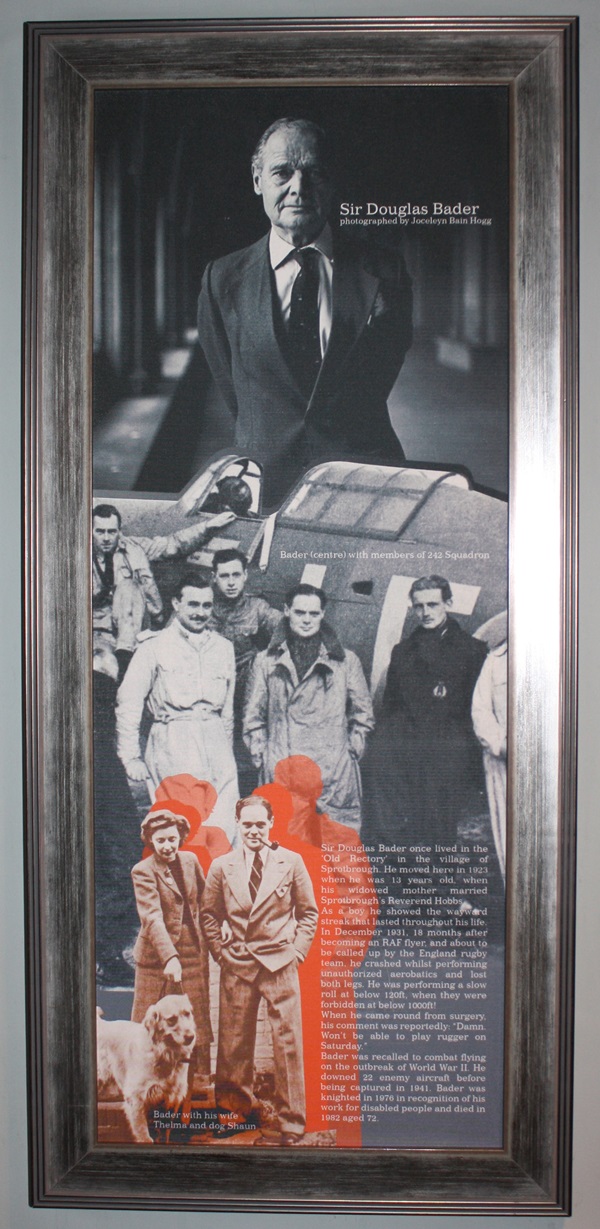
The text reads: Sir Douglas Bader once lived in the ‘Old Rectory’ in the village of Sprotbrough. He moved here in 1923 when he was 13 years old, when his widowed mother married Spotbrough’s Reverend Hobbs.
As a boy he showed the wayward streak that lasted throughout his life. In December 1931, 18 months after becoming an RAF flyer, and about to be called up by the England rugby team, he crashed whilst performing unauthorized aerobatics and lost both legs. He was performing a slow roll at below 120ft, when they were forbidden at below 1000ft!
When he came round from surgery, his comment was reportedly: “Damn. Won’t be able to play rugger on Saturday”.
Bader was recalled to combat flying on the outbreak of World War II. He downed 22 enemy aircraft before being captured in 1941. Bader was knighted in 1976 in recognition of his work for disabled people and died in 1982 aged 71.
Framed drawings and photographs about Doncaster.
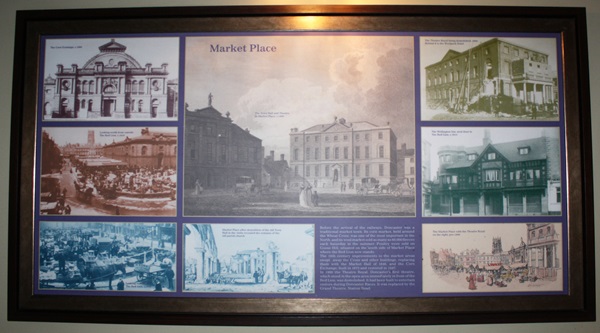
The text reads: Before the arrival of the railways, Doncaster was a traditional market town. Its corn market, held around the Wheat Cross, was one of the most important in the North, and its wool market sold as many as 60,00 fleeces each Saturday in the summer. Poultry were sold on Goose Hill, situated on the south side of Market Place where the Red Lion stands now.
The 19th century improvements to the market areas swept away the Cross and other buildings, replacing them with the Market Hall of 1846, and the Corn Exchange built in 1873 and restored in 1997.
In 1900 the Theatre Royal, Doncaster’s first theatre, which stood in the open area immediately in front of the Red Lion, was demolished. It had been built to entertain visitors during the Grand Theatre, Station Road.
Framed photographs of Doncaster in the 1900s.
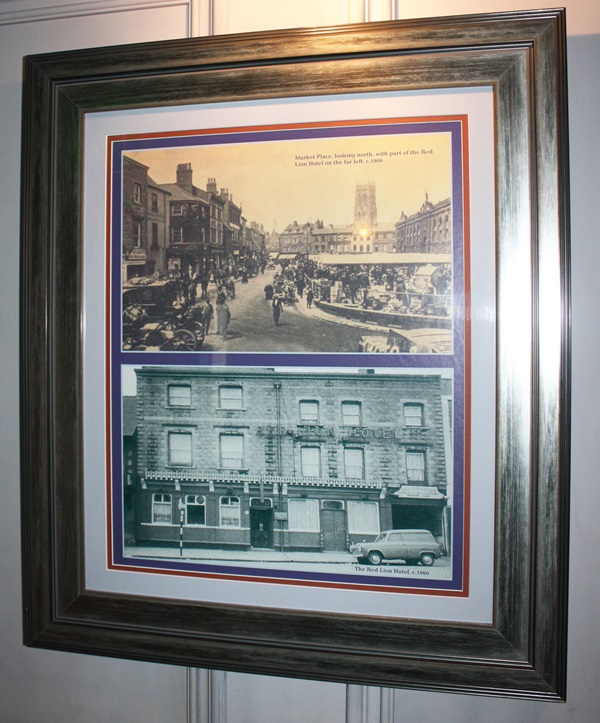
Above: Market Place, looking north, with part of the Red Lion Hotel on the far left, c.1900.
Bottom: The Red Lion Hotel, c.1960.
Framed photographs and text about Kevin Keegan.
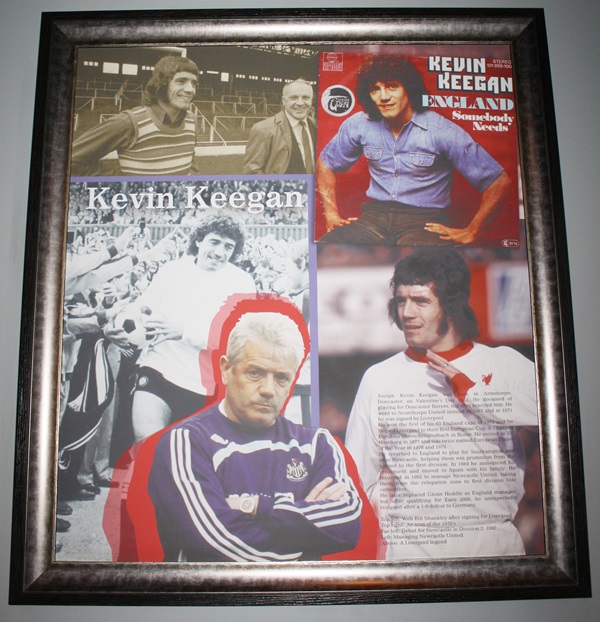
The text reads: Joseph Kevin Keegan was born in Armthorpe, Doncaster, on Valentine’s Day 1951. He dreamed of playing for Doncaster Rovers, but they rejected him. He went to Scunthorpe United instead in 1967 and in 1971 he was signed by Liverpool.
He won the first of his 63 England caps in 1973 and he helped Liverpool to their first European Cup, 3 – 1 against Borussia Monchengladbach in Rome. He moved to SV Hamburg in 1977 abd was twice named European Player of the Year in 1978 and 1979.
He returned to England to play for Southampton and the Newcastle, helping them to win promotion from the second to the first division. In 1984 he announced his retirement and moved to Spain with his family. He returned in 1992 to manage Newcastle United, taking them from the relegation zone to first division title contention.
He later replaced Glenn Hoddle as England manager, but after qualifying for Euro 2000, he unexpectedly resigned after a 1 – 0 defeat to Germany.
Top left: With Bill Shankley after signing for Liverpool.
Top right: An icon of the 1970’s.
Far left: Debut for Newcastle in Division 2, 1982.
Left: Managing Newcastle United.
Above: A Liverpool legend.
External photograph of the building before redevelopment – front.
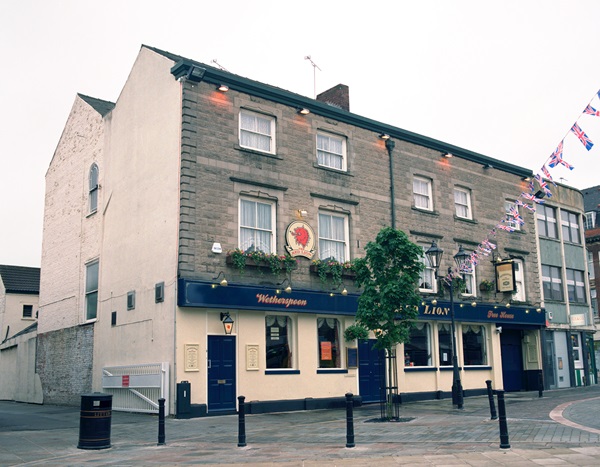
External photograph of the building after redevelopment – front.
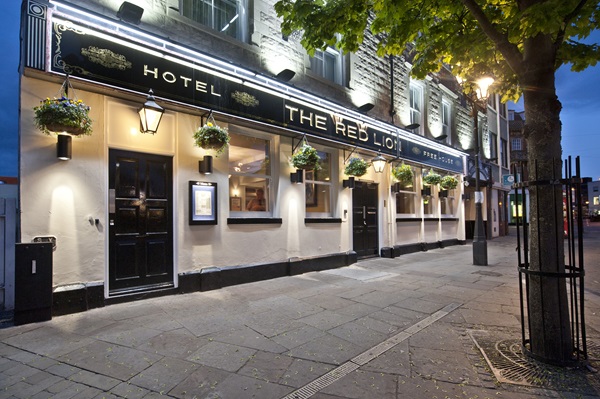
Inside one of the newly renovated rooms in the inn.
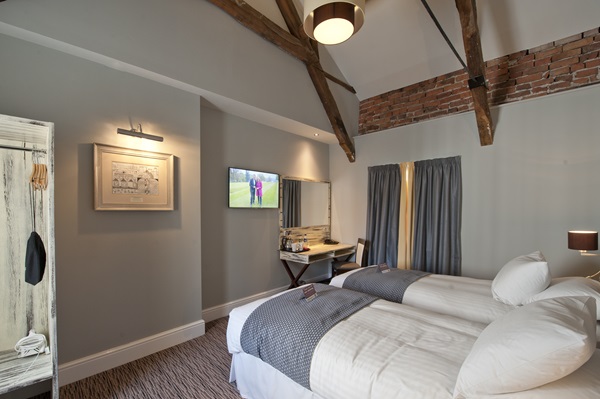
A story from Christopher Kitchen - an employee at the Red Lion:
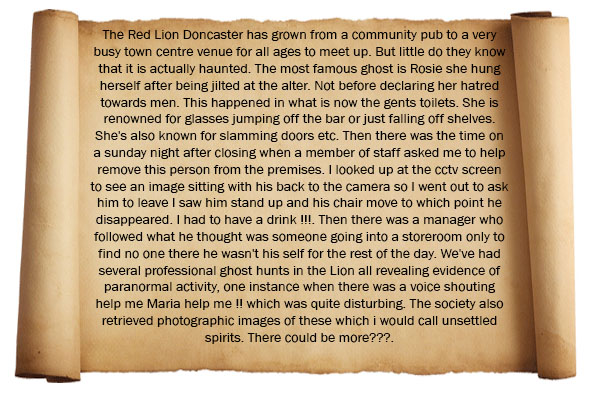
Extract from Wetherspoon News Summer 2017.
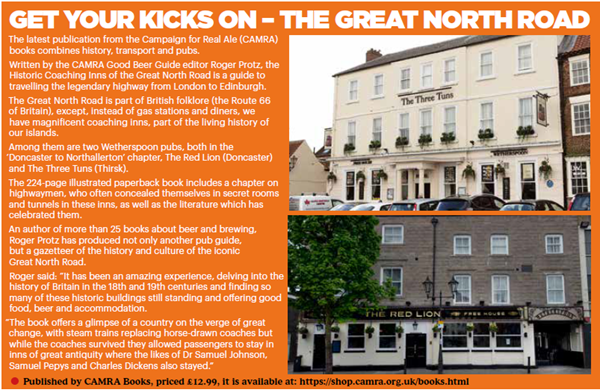
If you have information on the history of this pub, then we’d like you to share it with us. Please e-mail all information to: pubhistories@jdwetherspoon.co.uk